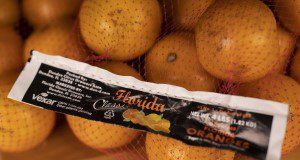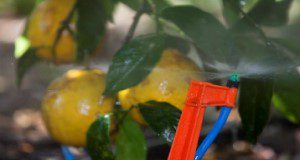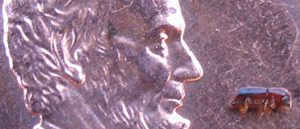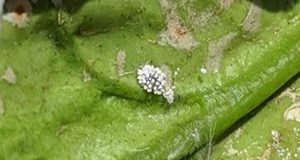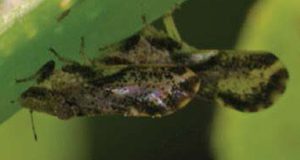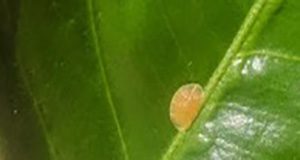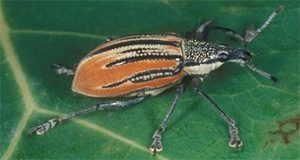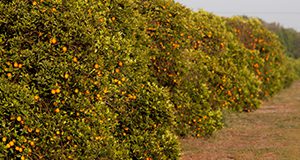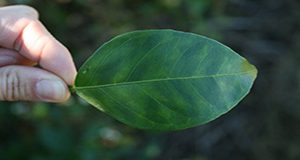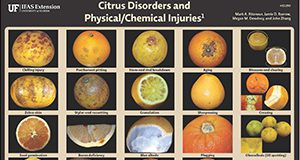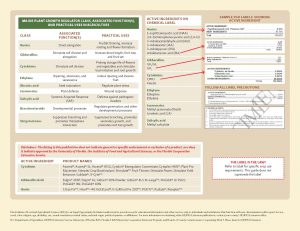This quick reference table will provide growers with information (suggested rates, use restrictions, etc.) on different herbicides used in citrus. The herbicide table, prepared based on the Florida Citrus Production Guide, will aid growers to select an appropriate postemergent herbicide program in citrus groves. Written by Ramdas Kanissery, Camille E. McAvoy, Jamie D. Burrow, Stephen H. Futch, Brent A. Sellers, and S. Shea Teems, and published by the UF/IFAS Horticultural Sciences Department.
https://edis.ifas.ufl.edu/hs1410
Tag: Jamie D. Burrow
Nutrition and Irrigation Management for Florida HLB-Affected Trees
To improve production of huanglongbing (HLB) affected trees, nutrition, irrigation, and soil pH should be considered together, because each can influence the efficacy of the others in overcoming the effects of HLB on tree performance. This two-sided poster published by the UF/IFAS Horticultural Sciences Department through the UF/IFAS Citrus Research and Education Center was written by Tripti Vashisth, Davie Kadyampakeni, and Jamie D. Burrow.
https://edis.ifas.ufl.edu/hs1367
Citrus Pest Quick Guide: Ambrosia Beetles (broadly used common name)
A one-page quick guide written by Lauren M. Diepenbrock and Jamie D. Burrow and published by the Entomology and Nematology Department presents the life cycle of the ambrosia beetle and provides several photos of the pest and the damage it causes to assist in identification.
https://edis.ifas.ufl.edu/in1283
Citrus Pest Quick Guide: Lebbeck Mealybug Nipaecoccus viridis (Newstead)
A one-page quick guide written by Lauren M. Diepenbrock and Jamie D. Burrow and published by the Entomology and Nematology Department presents the life cycle of the lebbeck mealybug and provides several photos of the pest and the damage it causes to assist in identification.
https://edis.ifas.ufl.edu/in1280
Citrus Pest Quick Guide: Asian Citrus Psyllid (Diaphorina citri Kuwayama)
A one-page quick guide written by and published by the Entomology and Nematology Department presents the life cycle of the Asian citrus psyllid and provides several photos of the pest and the damage it causes to assist in identification.
https://edis.ifas.ufl.edu/in1271
Citrus Pest Quick Guide: Citrus Leafminer (Phyllocnistis citrella Stainton)
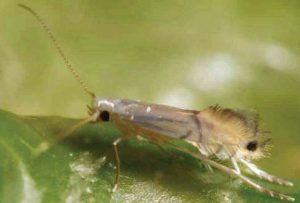
A one-page quick guide written by Lauren M. Diepenbrock and Jamie D. Burrow and published by the Entomology and Nematology Department presents the life cycle of the citrus leafminer and provides several photos of the pest and the damage it causes to assist in identification.
https://edis.ifas.ufl.edu/in1254
Citrus Pest Quick Guide: Brown Soft Scale (Coccus hesperidum Linnaeus)
A one-page quick guide written by Lauren M. Diepenbrock and Jamie D. Burrow and published by the Entomology and Nematology Department presents the life cycle of brown soft scale and provides several photos of the pest and the damage it causes to assist in identification.
https://edis.ifas.ufl.edu/in1252
Citrus Pest Quick Guide: Diaprepes Root Weevil (Diaprepes abbreviates Linnaeus)
A one-page quick guide written by Lauren M. Diepenbrock and Jamie D. Burrow and published by the Entomology and Nematology Department presents the life cycle of the Diaprepes root weevil and provides several photos of the pest and the damage it causes to assist in identification.
https://edis.ifas.ufl.edu/in1249
Formation of Citrus Canker Lesions
Citrus canker is a non-systemic bacterial disease that affects citrus trees in both the citrus nursery and in commercial plantings. This poster is designed to assist citrus nursery workers in the identification of citrus canker. This one-page document was written by Jamie Burrow, Megan Dewdney, Ajia Paolillo, and Tim Riley and published by the UF/IFAS Plant Pathology Department.
http://edis.ifas.ufl.edu/pp346
Citrus Production Guide: Plant Growth Regulators
Plant growth regulators (PGRs) are a tool used to manipulate vegetative and reproductive growth, flowering, and fruit growth and development. PGRs have been successfully used in agriculture for decades to amend plant growth characteristics to maximize yield and grower profit. This new 4-page fact sheet discusses auxins, gibberellins, cytokinins, abscisic acid, ethylene, new classes of plant hormones, use of PGRs for HLB-affected trees, and general considerations for PGR use in Florida citrus groves. Written by Tripti Vashisth, Chris Oswalt, Mongi Zekri, Fernando Alferez, and Jamie D. Burrow, and published by the UF/IFAS Horticultural Sciences Department, February 2018.
http://edis.ifas.ufl.edu/hs1310
Citrus Tree Care for the Home Gardener in the HLB Era
Since the early 2000s, growing citrus has become much more challenging due to plant disease pressure. HLB is the most devastating disease affecting Florida citrus, and threatens the survival of the citrus industry. This 4-page document describes citrus growth and care while managing the risk of an HLB infection. Written by Jamie D. Burrow, Tripti Vashisth, Megan Dewdney, and Brooke Moffis and published by the UF/IFAS Plant Pathology Department, November 2017.
http://edis.ifas.ufl.edu/pp336
Citrus Fruit Blemishes and Decay Caused by Fungi and Bacteria
This new one-page citrus identification fact sheet illustrates different blemishes from fungi and bacteria that affect citrus. Written by Mark A. Ritenour, Jamie D. Burrow, Megan M. Dewdney, and John Zhang and published by the Horticultural Sciences Department.
http://edis.ifas.ufl.edu/hs1291
Citrus Nutrition Management Practices
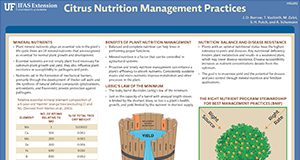
A new two-page fact sheet has been published by the Horticultural Sciences Department and the UF/IFAS Citrus Research and Education Center about citrus nutrition management practices. It was written by J.D. Burrow, T. Vashisth, M. Zekri, S.H. Futch, and A. Schumann.
http://edis.ifas.ufl.edu/hs1292
Florida Citrus Activity Book
The Florida Citrus Activity Book is a basic introduction to Florida citrus trees, diseases, and pests. This 20-page booklet is for elementary students. Written by J.D. Burrow, M.M. Dewdney, M.E. Rogers, and T. Vashisth and published by the Plant Pathology Department.
http://edis.ifas.ufl.edu/pp331
Quick Reference Guide: for Plant Growth Regulators (PGR) in Florida Citrus Production
A new two-page fact sheet explains Plant Growth Regulators (PGRS) and their application and use in Florida citrus production. Written by T. Vashisth and J.D. Burrow and published by the Horticultural Sciences Department.
http://edis.ifas.ufl.edu/hs1284
Frequently Asked Questions About Huanglongbing (HLB; citrus greening) for Homeowners
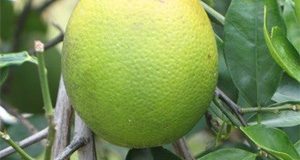
Huanglongbing (HLB), also known as citrus greening, is a serious bacterial disease that affects citrus in Florida. Florida residents enjoy growing citrus for a variety of reasons, but growing citrus in today’s disease climate is not an easy task. This seven-page document is designed to help Master Gardeners and homeowners answer commonly asked questions about HLB. Written by Brooke L. Moffis, Jamie D. Burrow, Megan M. Dewdney, and Michael E. Rogers and published by the Plant Pathology Department.
http://edis.ifas.ufl.edu/pp326
Phytophtora Management in Citrus Nurseries
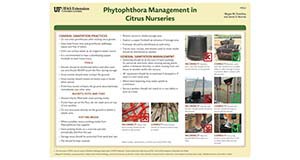
Check out the new fact sheet about Phytopthora Management in Citrus Nurseries. A great on-hand resource, this fact sheet covers sanitation practices, tools, and potting media for citrus nurseries. It also illustrates correct and incorrect practices and provides information about disinfectants and chemicals to use. Written by Megan M. Dewdney and Jamie D. Burrow, and published by the Plant Pathology Department.
http://edis.ifas.ufl.edu/pp322
Dooryard Citrus Production: Asiatic Citrus Canker Disease
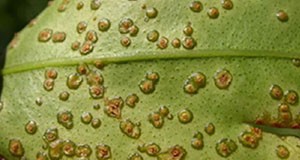
Asiatic citrus canker is a bacterial disease of citrus that causes necrotic lesions on leaves, stems, and fruit of infected trees. Severe cases can cause defoliation, premature fruit drop, twig dieback, and general tree decline.This eight-page fact sheet explains the history of citrus canker in Florida, describes the symptoms of citrus canker, and details how to manage the spread of citrus canker disease by preventing infection and controlling existing infections. Written by Megan M. Dewdney, Jamie D. Burrow, James H. Graham, Timothy M. Spann, and Ryan A. Atwood, and published by the Horticultural Sciences department.
http://edis.ifas.ufl.edu/pp323
